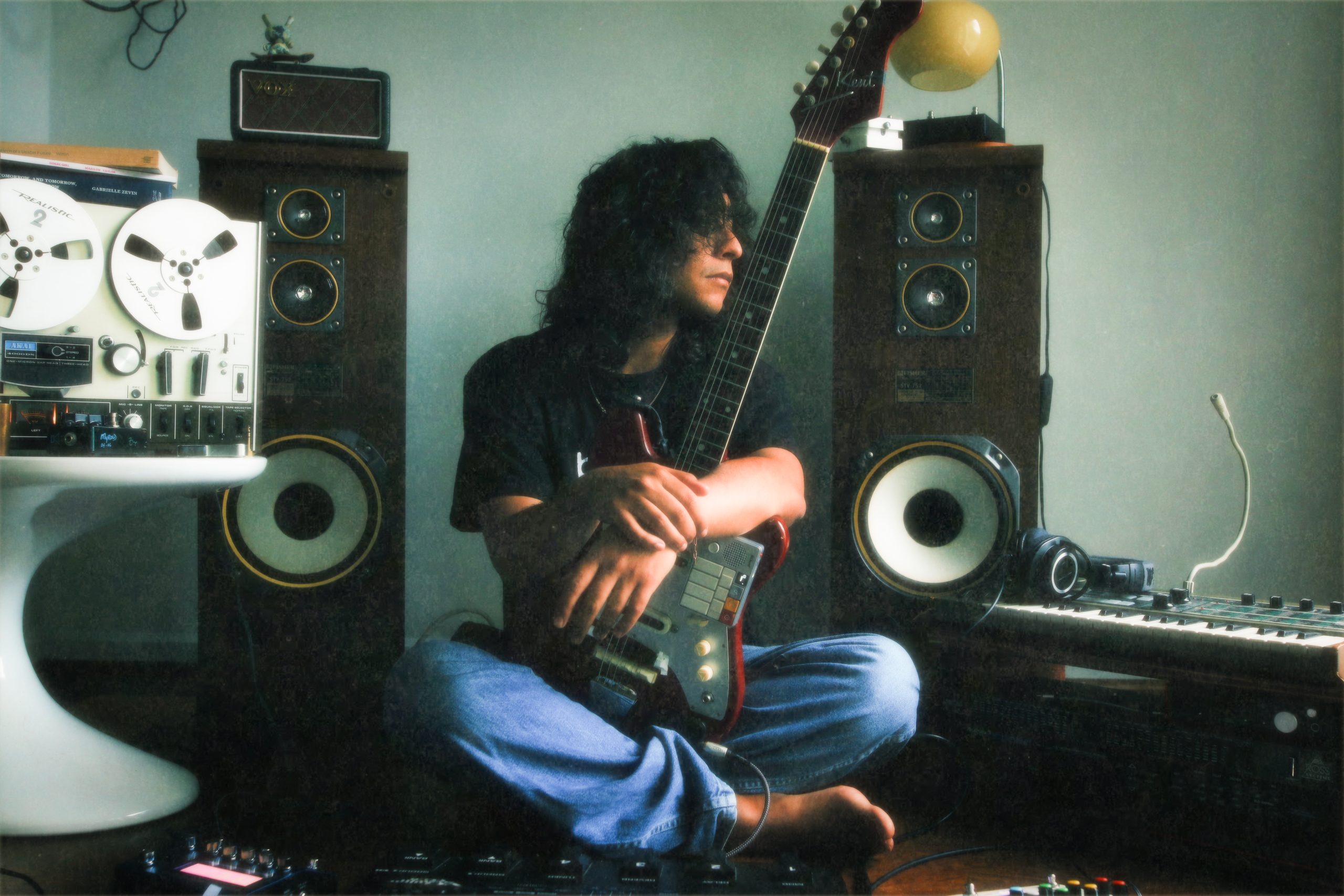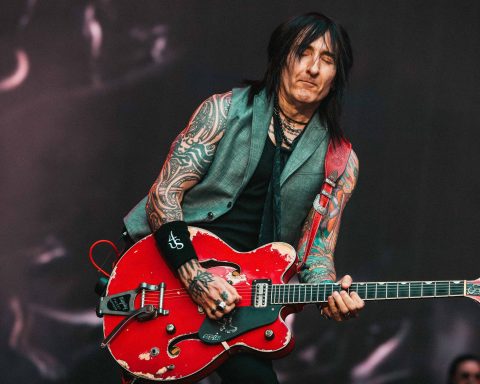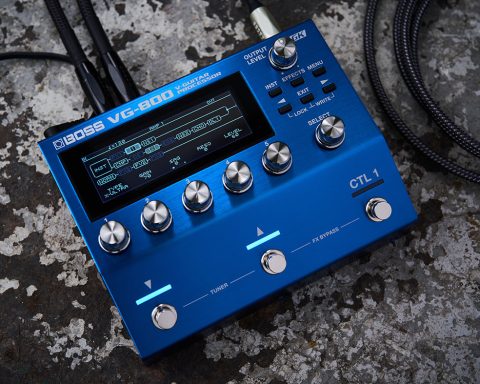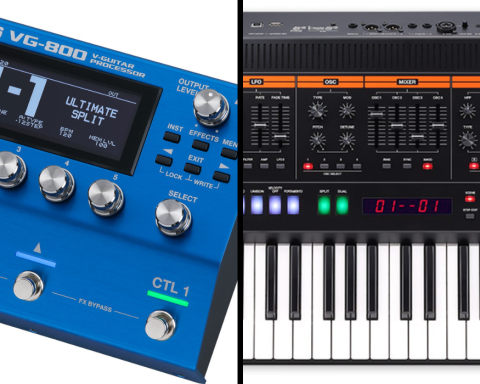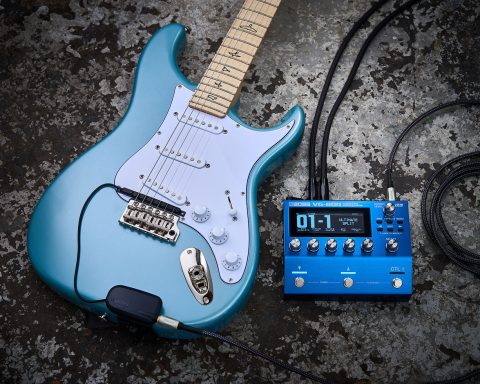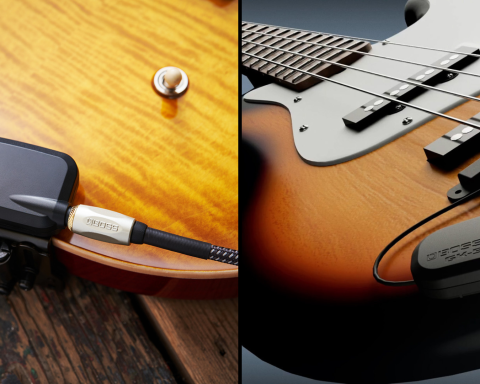If you’re unfamiliar with Toast—aka Marcus Hidalgo—it’s time to take notice. An inventive guitarist, songwriter, and sonic tinkerer based in Nashville, Tennessee, Toast has a knack for finding beauty in the unexpected. Taking direct inspiration from cutting-edge players like Mk.gee, his sound is equal parts textured, exploratory, and melodic, and much of that magic stems from his relationship with the V-Guitar ecosystem. Earlier this year, Toast picked up the new VG-800 V-Guitar Processor. He calls it “life-changing.” It’s a bold statement, but one that quickly makes sense once you hear what he’s doing with it.
Freedom of Expression
Toast didn’t grow up surrounded by musicians, though his ears were finely tuned from a young age. His parents weren’t players themselves, but they filled the house with a carefully curated mix of Michael Jackson, Tears for Fears, Red Hot Chili Peppers, and the Beastie Boys. That deep, repeated listening laid the groundwork. Eventually, he bought a guitar from Best Buy and began teaching himself, pulling inspiration from Joni Mitchell’s tuning experiments, Dave Matthews’ rhythmic fingerpicking, and the ethereal tones of Andy Summers and Mike Rutherford.
His discovery of V-Guitar came through watching those very influences. Seeing Joni Mitchell wielding a Roland VG-8 V-Guitar System with grace and intention opened the door to a whole new dimension. From that moment, he dove in headfirst, scoring a used VG-8EX V-Guitar System in his native Florida before eventually embracing the VG-800 as his main creative tool. But V-Guitar is more than just gear to Toast—it’s key to his continuous evolution and growth as a musician. “Ultimately, V-Guitar has allowed me to express myself more freely than before,” he explains.
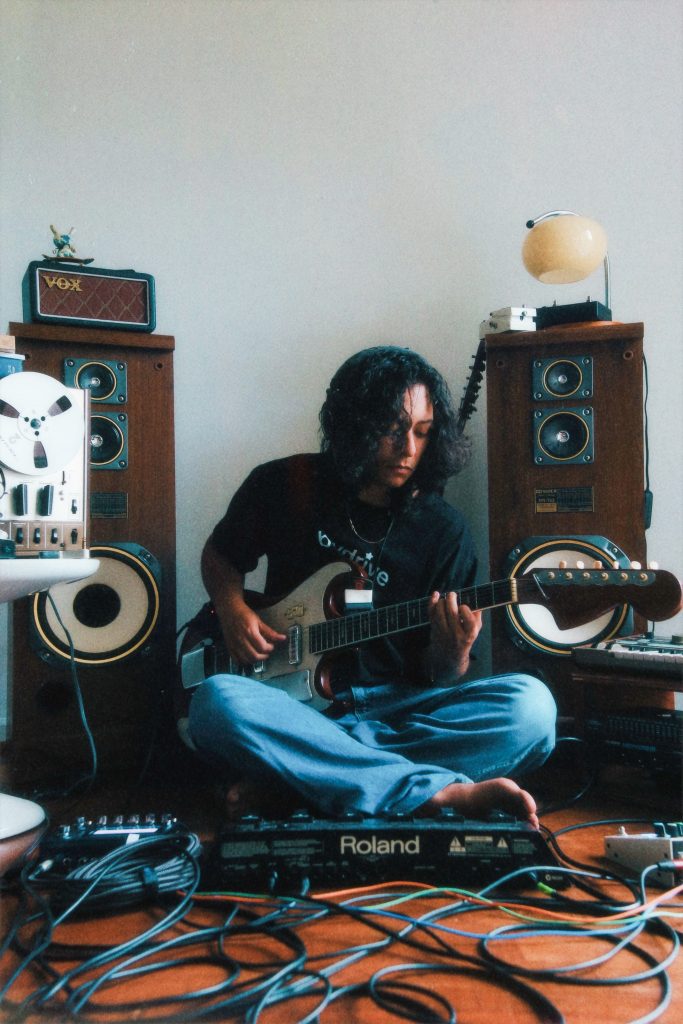
In this inspiring interview, Toast unpacks how the VG-800 has reshaped his sound, live rig, and creative approach to writing and performing. From wide 12-string patches and steel-string warmth to sitar simulations and GR-300 nostalgia, Toast is charting new ground—and showing just how inspiring and intuitive the VG-800 can be for modern players.
Whether you’re a tech explorer or a tone traditionalist, there’s something here for you. Keep reading.
Expanding Possibilities
How did you discover V-Guitar?
I first saw it when watching old Joni Mitchell videos. And she still uses it. When I saw the attachments on her guitar, I was like, “What is that?!” When I recently started using V-Guitar, it opened up possibilities I didn’t even know existed.
At the same time, I was introduced to the concept of using a guitar for MIDI control of plug-in instruments. I’m always looking for fun things to expand my music, so it was perfect timing.
"V-Guitar opened up possibilities I didn’t even know existed."
Joni Mitchell has used V-Guitar for alternate tunings since the first unit, the VG-8 V-Guitar System, was released in 1995.
She’s a master. The VG-800’s alternate tuning is amazing. There’s no lag or anything—it feels totally natural. With V-Guitar, I could use the same guitar for any kind of tuning and sound. I love it. Whenever I bring the VG-800 to a gig, people look at it like it’s a spaceship. They’ve never seen anything like it.
I grew up listening to Joni Mitchell and Genesis with Mark Rutherford, so it seems natural to me. But a lot of other people aren’t very knowledgeable about it. I’m like, “Really? I feel like I’ve known about guitar synths and V-Guitar for a while now.”
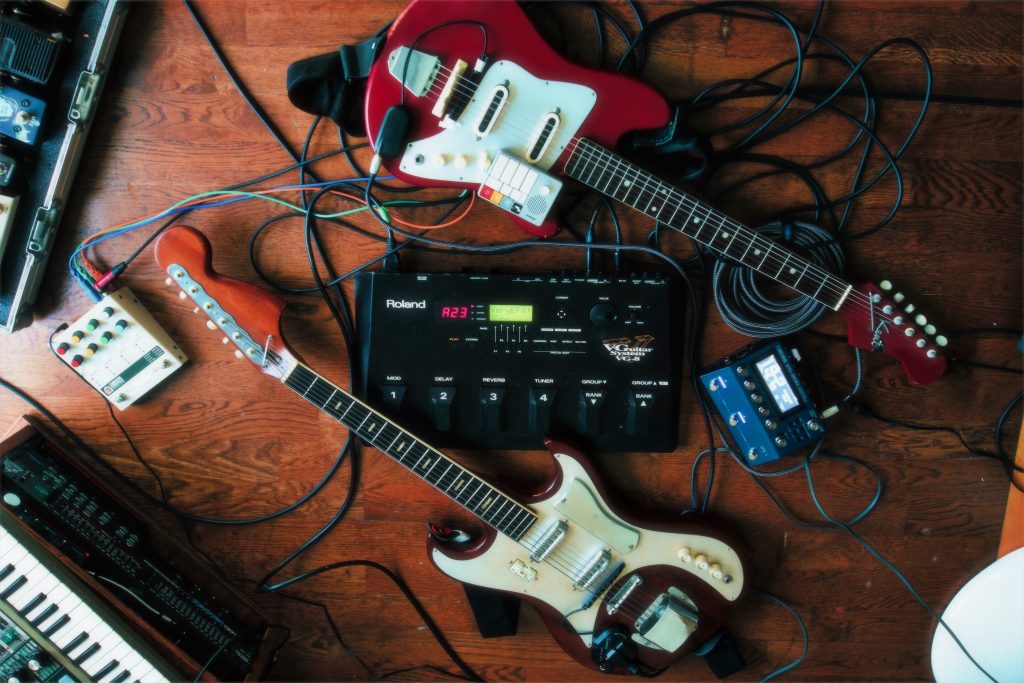
Creative Mindset
Do you find the VG-800 V-Guitar Processor intuitive to use?
I guess it can look intimidating if you’re new to it, but it’s actually pretty straightforward. I mean, it’s way less complicated than using a lot of synthesizers and plug-ins. And if you like to get hands-on with your gear, the VG-800 is perfect for that. I try to keep a childlike mindset with it and have as much fun as I can.
The VG-800 MIDI control function is a handy addition; have you used it much to record software instruments in a DAW?
Yeah, I’ve been doing that for a long time. I used to have the Roland GI-10 Guitar-MIDI Interface with the 13-pin connection. I’m so sad I sold it. I’d use that to record MIDI. I’m not a keys guy, so I’m a huge fan of using guitars to record MIDI tracks. I feel like if I use keys to record, I lose time. All I want is cool sounds and lines, so it makes life way easier being able to use a guitar.
Artistic Evolution
How has your guitar playing style evolved, and in what ways does the VG-800 enhance and respond to it?
I learned guitar initially using my fingers, rather than a pick. After that, I got into playing jazz guitar, so I started using the small jazz picks. When I got into V-Guitar, I discovered it complements your playing style and technique. I love just playing with my fingers, and that translates nicely with the VG-800, especially with the steel-string acoustic sounds. You can get that warmth. It’s insane.
I’ve not heard any other piece of gear that’s able to replicate those kinds of sounds so accurately. It really tripped me out. Like, “I’m hearing an acoustic, but I’m looking down at my hands playing an electric guitar!”
"The VG-800 complements your playing style."
I’ve played some of the Roland GR guitar synthesizers and often play the old Roland VG-8EX V-Guitar System. They have some steel-string patches, but I was blown away by the modeling sounds in the VG-800, particularly the 12-string and sitar.
The VG-800 complements your playing style, especially swells and synth lead lines. If you dig in hard, it responds. It has much better headroom and dynamics, which is cool. I can play softly, and it responds nicely, and when I dig in, the sound just explodes. It’s really, really fun.
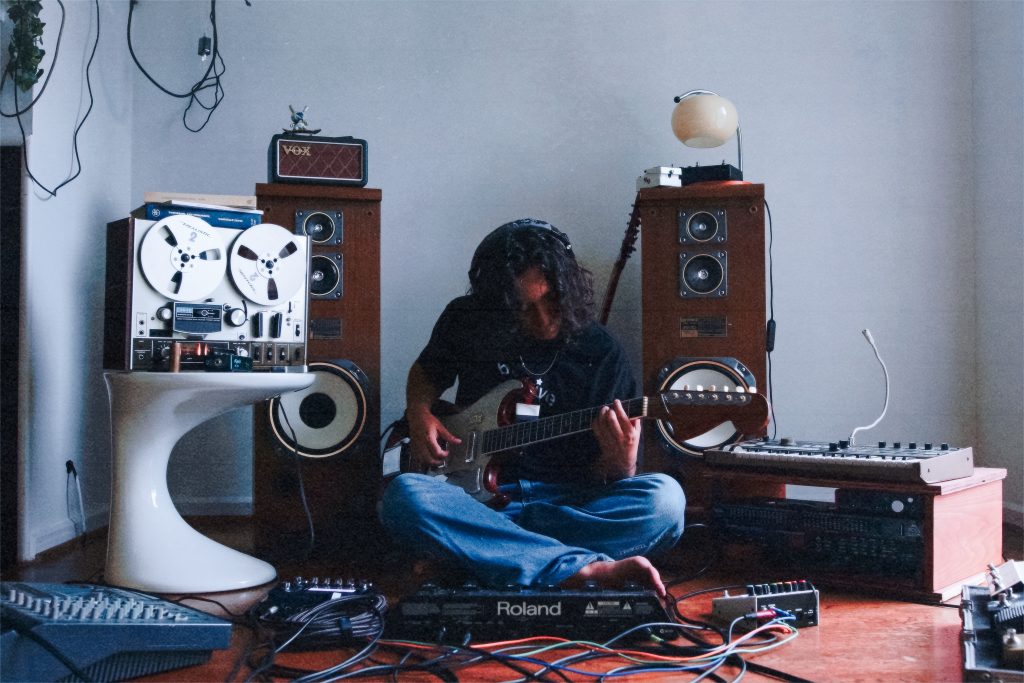
Pickup Perfection
What was it like installing the GK-5 Divided Pickup?
Oh my god! It took seconds, honestly. Obviously, the V-Guitar technology has advanced so much since the VG-8 came out. I’ve been slapping the older GK pickups on vintage guitars I’ve found at pawn shops.
I put a GK-2 on one of my guitars, and it took a whole morning to calibrate the string height and all that. If you get it right, it’ll work well. But with the GK-5, I sat down, and it worked perfectly straight away. I didn’t have to adjust much at all. It was so easy. That’s probably the most frustrating thing for people about V-Guitar, and the GK-5 is a big improvement.
"With the GK-5, I sat down, and it worked perfectly straight away. I didn’t have to adjust much at all. It was so easy."
The GK-5 Divided Pickup itself is slimmer and cleaner-looking than the older GK pickups. The GK-2 is heavy-duty in comparison and looks like a computer attachment, whereas the GK-5 looks like it’s part of the guitar. And the fact that it’s a quarter-inch TRS connection, rather than a 13-pin connection, is great. Everyone’s more familiar with that. Plus, 13-pin cables seem much more difficult to find these days.
Stage and Studio
People love how pedalboard-friendly the VG-800 is.
Yeah, the VG-800 is much smaller than older V-Guitar units. The fact that it’s so portable is life-changing. I’m not afraid to bring it on the road with me. I’ve just been using it on tour for a month. I carried it in a backpack and brought it out on stage, and it worked great every time.
The older V-Guitar processors are so big that they’re more of a substitute for a pedalboard, whereas the VG-800 is like the BOSS 500-series pedal size. I don’t want the VG-8EX to leave my house because it’s not as portable as the VG-800. The VG-800 will now be my go-to for touring and recording.
Superlative Sounds
What are some of your favorite VG-800 sounds?
I love the wide 12-string acoustic preset. That one is so much fun to play. I love anything steel-y and plucky. Every time I turn the VG-800 on, it goes to that preset. Another preset blends metal guitar with acoustic, which is also really fun. If I’m digging in, it sounds like a big, explosive guitar. But then I can switch to playing softly with an acoustic sound. I love that so much. All the steel-string stuff is my favorite, and I really love the sitar sound. I’ve never even played a sitar, so it’s pretty special.
I’m also a huge fan of the Roland GR-300 sounds. I used to watch videos of Andy Summers playing the GR-300 Guitar Synthesizer, and the VG-800 is great at honoring those classic GR-300 sounds. It sounds more hi-fi than the VG-8EX. I’ve also recorded with the VIO Guitar sounds from the VG-800—mainly pad sounds. Those VIO sounds remind me of what I might use the MIDI guitar function for (to operate software synths in a DAW).
"The VG-800 is so much fun to use, and there’s a lot more to be discovered."
What do you think of the BOSS Tone Studio for VG-800 editing software?
It’s so much fun to play with. Using the VG-800 with your computer makes finding and editing your favorite sounds so much easier.
Sonic Odyssey
What excites you most about exploring the VG-800’s deeper features, and how does that fuel your creativity?
It’s so much fun to use, and there’s a lot more to be discovered. Like assigning different parameters to control switches—say, for pitch bends or something. Or like changing Telecaster model pickups with a footswitch—that kind of thing. I’m excited to really dig into the full functionality of the VG-800. Like the Dual Guitar function—I need to delve into that more. That’s really exciting. I love combining different signals to create something unique.
It’s definitely worth putting in the time to find out what the VG-800 can offer. The more I’ve discovered since I’ve had it, the more it fuels my creativity. The more it can draw out curiosity and questions about creative possibilities, the more it will stand the test of time, and a broader range of musicians will enjoy it.
If I get a piece of gear and uncover all its possibilities on day one, I feel like I didn’t get to ask any questions or explore something unique. The more questions a piece of gear makes you ask, the better usage it has.
"It's definitely worth putting in the time to find out what the VG-800 can offer."
What do you think of the VG-800’s amp modeling?
Using the amp modeling was life-changing on the road. The easier you can make the stagehands’ lives, the better. I didn’t bring an amp or head on tour last time; I used the VG-800 instead. I just plugged it into my laptop and dialed in some clean and dirty patches using the Tone Studio software. It worked perfectly the whole gig.
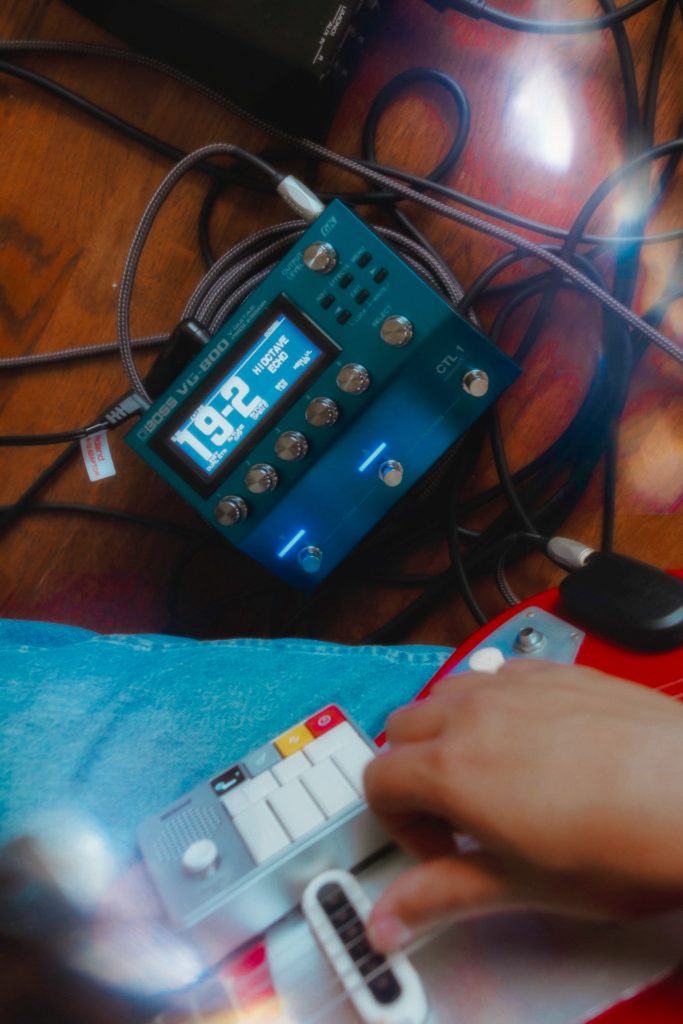
I held on to the romantic notion of always using an amp for a long time. But it’s better to accept that we’re living in the future. Everywhere we went, we had huge compliments, not just about the sound, but also that we had the easiest, fastest live setup. It’s also cheaper to travel without an amp.
I really want to dive more into amp modeling in the studio, too. It’s cool that you can use the VG-800 as an interface for recording—just plug it straight into your DAW.
